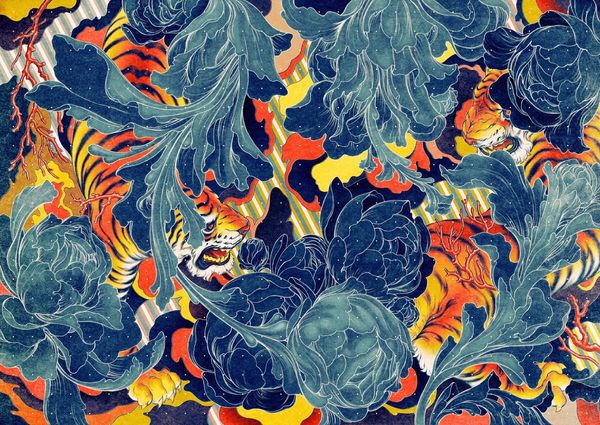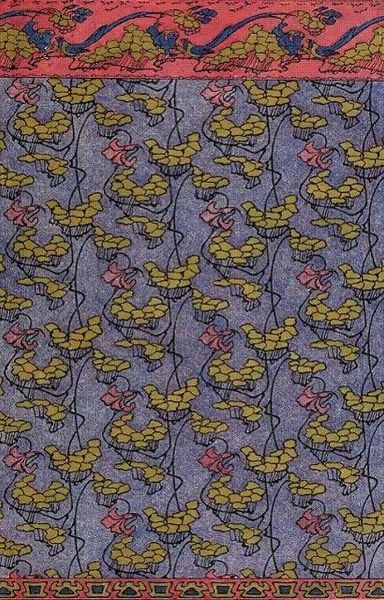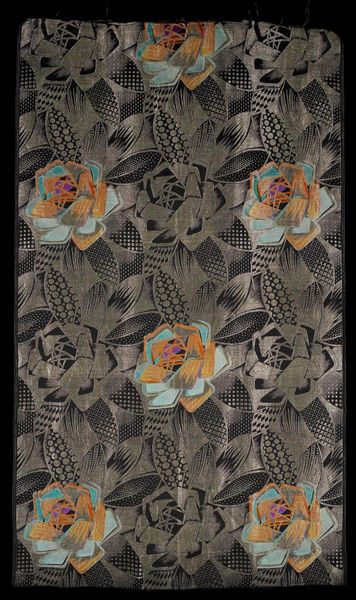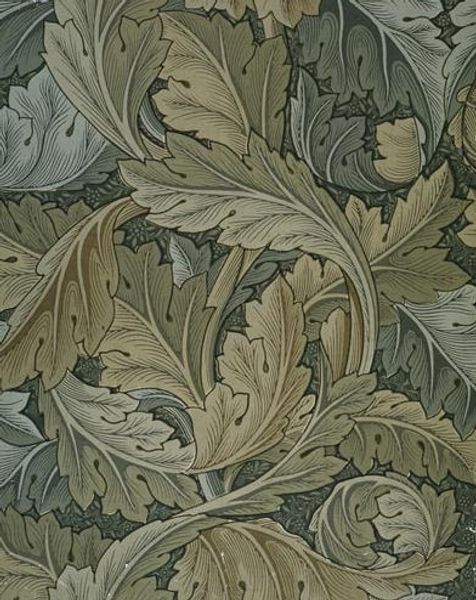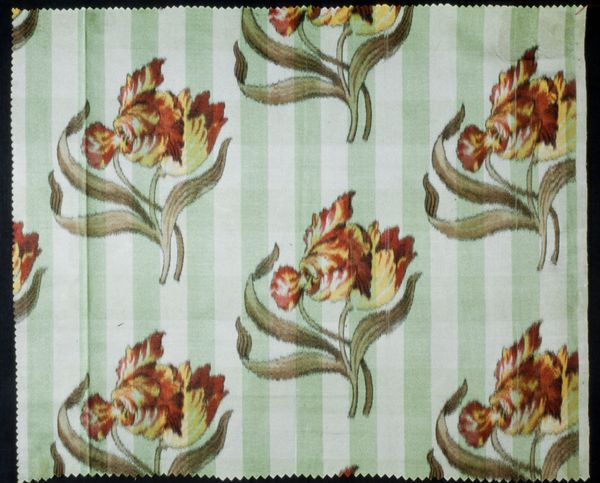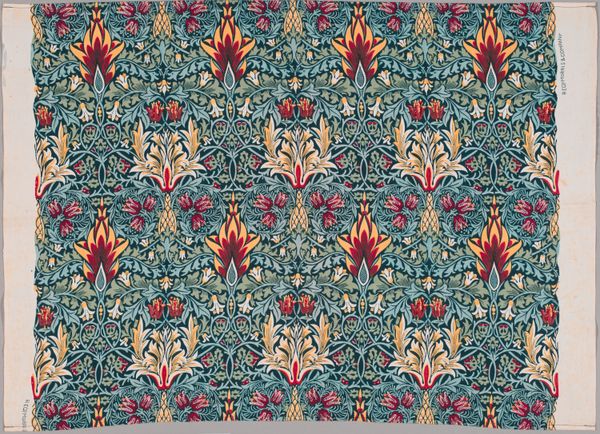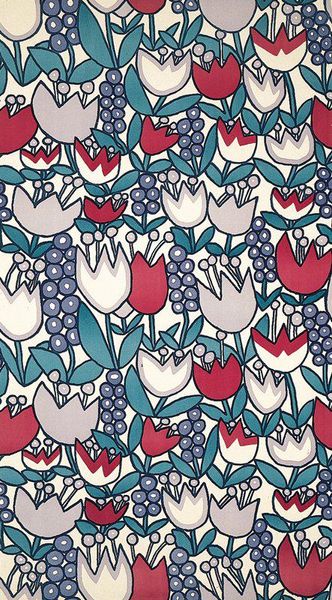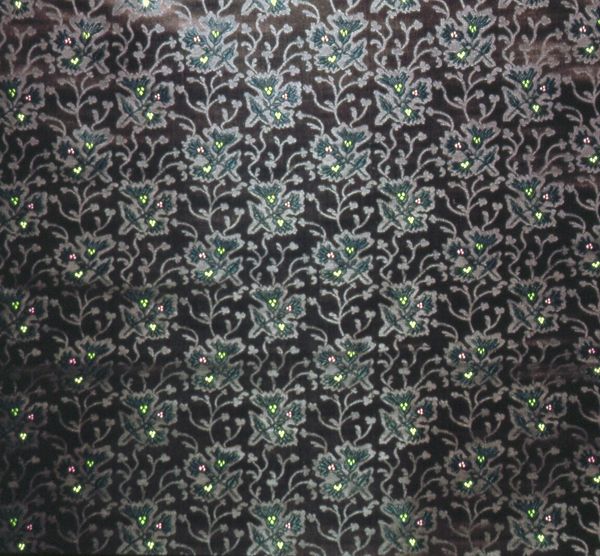
drawing, paper, ink
#
pattern-and-decoration
#
drawing
#
organic
#
pop-surrealism
#
figuration
#
paper
#
ink
#
surrealism
Copyright: Modern Artists: Artvee
Curator: Welcome. The work before us, executed in acrylics, is entitled "Caskets" and comes from the studio of James Jean, completed in 2016. It immediately strikes me with its intricate, almost dizzying compositional complexity. Curator: It's…strangely beautiful, isn't it? But there's something unsettling about it. The repeating pattern of the figures—are those monkey-rooster hybrids?—over a decorative floral backdrop feels almost claustrophobic. It speaks to themes of identity, cultural hybridity, maybe even some form of…forced adaptation? Curator: Forced adaptation is a compelling reading. I'm more drawn to the artist’s control of line and the flatness of the picture plane. Look how the arabesque lines define each creature while barely separating it from the decorative background. The limited palette—pale blues, pinks, reds—creates a harmonious, albeit muted, field of visual information. The lack of traditional perspective flattens the hierarchy between foreground and background, almost forcing you to view the artwork in its totality and as one single gesture. Curator: But doesn't that flattening itself convey a message? Consider the political context – the surge of globalized aesthetics, appropriation, and the erasure of cultural uniqueness under capitalist pressure. Could the “caskets” in the title be metaphors for containers of lost cultural identity? The repeating figures—the chimera of a monkey merged with a rooster—become emblematic of that forced blending and potential loss. It feels reminiscent of cultural symbols repackaged as commodities. Curator: I concede the potential for a commodity-critique through repetition. However, I’d like to counter by suggesting a visual game. The seamless merging of the figures with their background also highlights a different kind of unity. The picture suggests a celebration of surfaces where pattern becomes the primary focus – less concerned with the specific identity of each subject and more involved in a fluid exchange of forms and colors across the entire canvas. Curator: Perhaps. Yet the knowing gaze of that monkey-rooster seems to implicate us, the viewers. Are we also part of this cycle of consumption and cultural remixing? It’s beautiful, certainly, and technically impressive. But for me, it’s a mirror reflecting our own complex relationship with globalization. Curator: It is a captivating synthesis of Eastern and Western traditions with very astute technical skills. I appreciate you pushing me to think beyond just its structural harmonies, as cultural interpretations ultimately expand the viewers engagement. Curator: Likewise. Examining how artistic choices mirror larger societal forces expands the meaning of these visual forms, connecting the aesthetic to lived experiences. It is through such dialogue that artworks are most powerful.
Comments
No comments
Be the first to comment and join the conversation on the ultimate creative platform.
